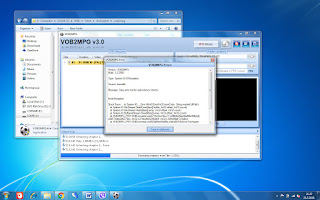Phase 3 - Detailed processing
This is where we start processing our video materials with AviSynth. I strongly suggest to everyone who wants to get more into the matter to check out this link: https://forum.doom9.org/showthread.php?t=161493 . This is where you can find more detailed information on video restoration. What I am about to show you is a simplified version, and I will not theorize much. I will try to be more practical and show you through examples what I did and how I did it. Since AviSynth doesn't have a GUI (graphical user interface), I will instruct it what to do through scripts, using the AvsPmod text processor. We will see the effects of our scripts in VirtualDub. As AviSynth is oriented on processing AVI files, and my materials are in MPEG format, I will have to make some extra effort to produce videos that are usable for my plan. There are two reasons why I'm not using the AVI format. First of all, I chose not to get a telecine to copy the videos myself, frame by frame, to produce AV...


